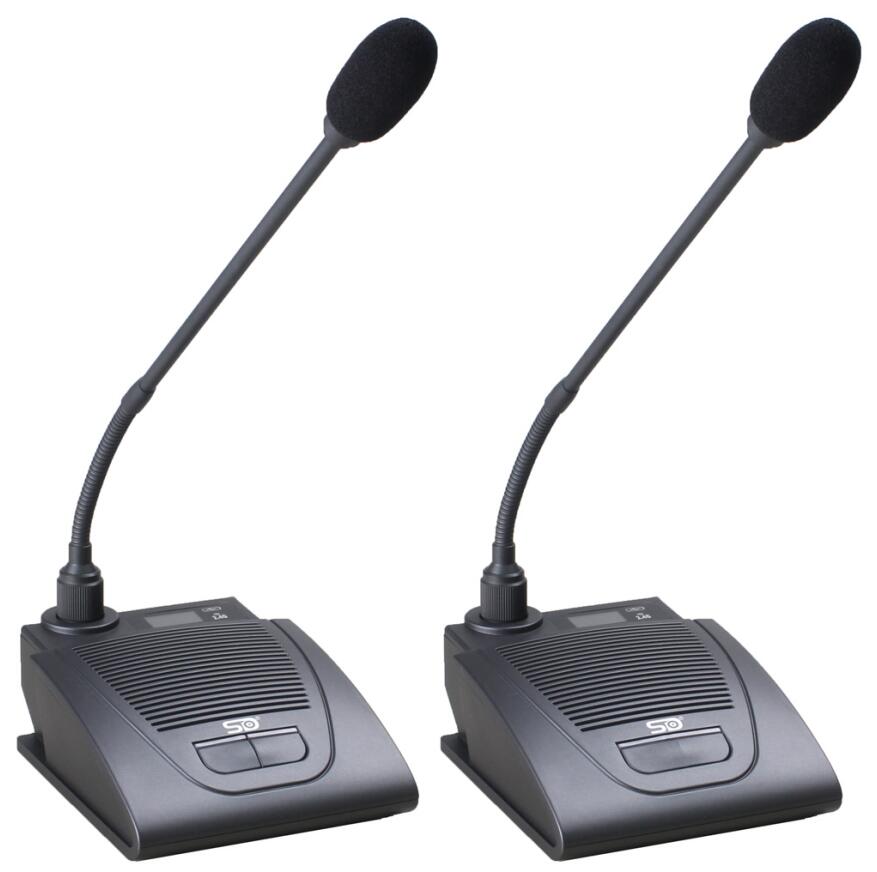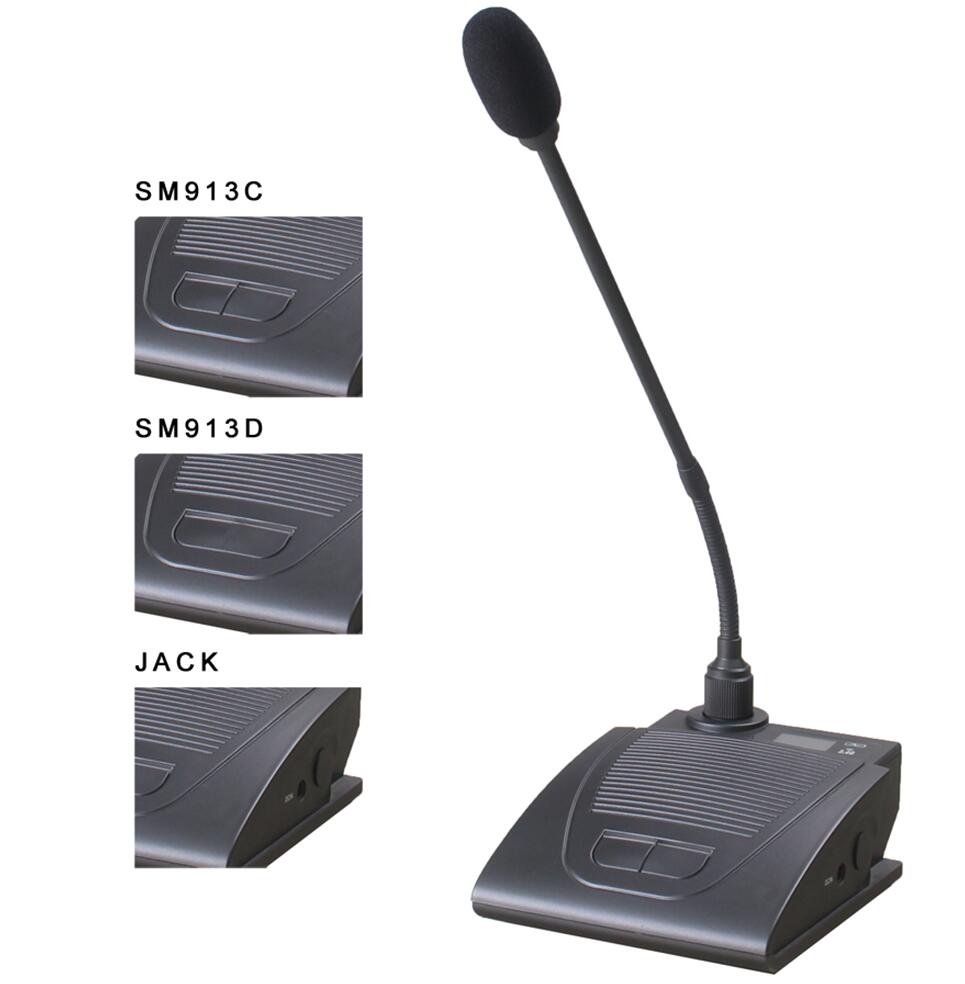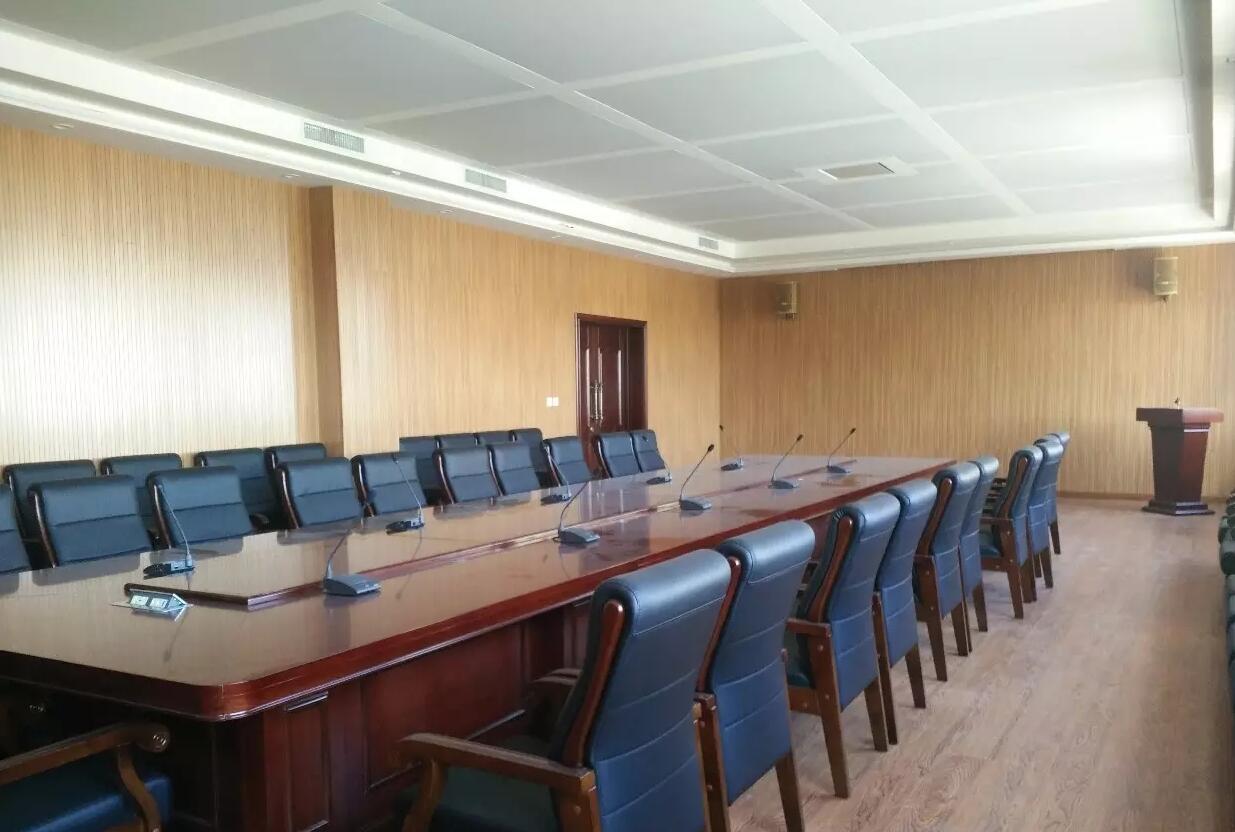Main controller
Performance characteristics:
1. The system only uses the globally available 2.4G ISM frequency band (2400-2483MHz), completely eliminating the hassle of connecting wires and allowing for easy mobility.
2. Digital encryption adaptive frequency hopping spread spectrum technology ensures good confidentiality of speech content.
3. You can configure 1-999 speaking units as needed. In the first in, first out working mode, all speaking units can start speaking at any time by pressing the speaking button. The system defaults to a maximum of 4 people who can speak simultaneously. The number of simultaneous speakers can be set to 1-4 on the host.
4. There is&quo; First in, First out& Ldquo; Restricted speech& Ldquo; Limited time speech& Ldquo; Four speaking modes can easily achieve venue order management.
5. Any chairman speaking unit can initiate a vote.
6. Four in and one out video signal control and automatic tracking of the current spokesperson.
7.24 bit PCM high-precision audio signal quantization processing, lossless wireless transmission, and sound quality comparable to wired.
8. Equipped with built-in anti howling functions such as frequency shift, feedback suppression, and intelligent balancing, effectively improving sound transmission gain.
9. A system is equipped with one host and 1-999 speaking units. The speaking units are divided into representative units, chairman or VIP units, and the two types of speaking units can be used in any combination.
10. Optional Chinese and English interface, user-friendly menu, easy to operate.
Technical parameters:
Model:sh2191
Power supply Eurasian continent: AC 220 V~240 V 50 Hz (manual selection required)
Power consumption standard:<50 W
Frequency response 80-18000 Hz (3 dB)
Signal to noise ratio>80 dB (A)
Dynamic range>90 dB
Total harmonic distortion≤ 0.01%
Channel crosstalk>80 dB
Display 128 * 64 LCD display screen
Environmental temperature and humidity requirements -20~60 ℃/0-95% (no condensation)
Waterproof ability, rainproof, dustproof, and salt spray resistant
Power supply/consumption 115/230Vac (± 5%)– 50/60Hz/50 VA
Dimensions (length x height x depth) 420 * 266 * 66 mm
Weight 4KG
Wireless conference microphone

SH2191
System Overview:
This system is specifically designed for wireless audio and video digital conference systems. The host system does not require complex cable installation and can be flexibly configured according to conference requirements. It includes discussion conference systems, video multimedia conference systems, and remote video conference systems. The system uses the world's commonly used 2.4G band, which can be used without any frequency application during installation and use. Its advanced 2.4G frequency hopping DSSS and digital transmission technology greatly reduce the impact of various interference signals on system operation. 2.4G has unique transmission characteristics, poor ability to bypass obstacles on the entire block, and signals can only be limited to the conference room. Its digital transmission technology and comprehensive communication protocol ensure the safety of conference content to the greatest extent possible. The system can Meeting the needs of ordinary fixed installation conference rooms, mobile conference rooms can also be established, and providing a highly reliable conference solution in a convenient and fast manner.
New design that can completely coexist with WIFI,
Support central centralized control system
Stable design with locking and plug-in microphone pole
High sensitivity microphone design, with a pickup distance of up to 50CM
Red circular fog surface indicator light design, indicating the speaking status
First in, first out mode
The total number of supported Chairman/Vice Chairman units in a system is 99
Up to four microphones can speak simultaneously
With two red digital tube prompts, the prompt content includes microphone address, VIP,
The chairman microphone has a chairman priority button function, which can close the representative unit that is speaking; When the chairman microphone is turned on, it means that the microphone cannot be turned on until it is turned off. The system supports a maximum of three chairman microphones
Dual power supply switching, can use 2000mA NI-H rechargeable battery and regular No. 5 battery, can standby continuously for more than 20 hours, and can speak continuously for 10 hours
Model SM913C/SM913D
Digital frequency hopping with transmission and reception operating frequencies of 2.400-2.500
Communication distance of 25m± Visual distance when using an 11dB antenna at a distance of 5m
Audio output amplitude<0dB20CM, distance speech typical value is 200MV
Output frequency response 100Hz-18KHz
Total harmonic distortion of audio+signal-to-noise ratio; 80dB
Chairman and attending unit power source 2.4/3V DC
System sensitivity -38dB± 2dB
Chairman's machine current 60/86mA± 3mAstandbymode/workingmode, 3V
Attendant machine current 60/82mA± 3mAstandbymode/workingmode, 3V

 中文
中文 


